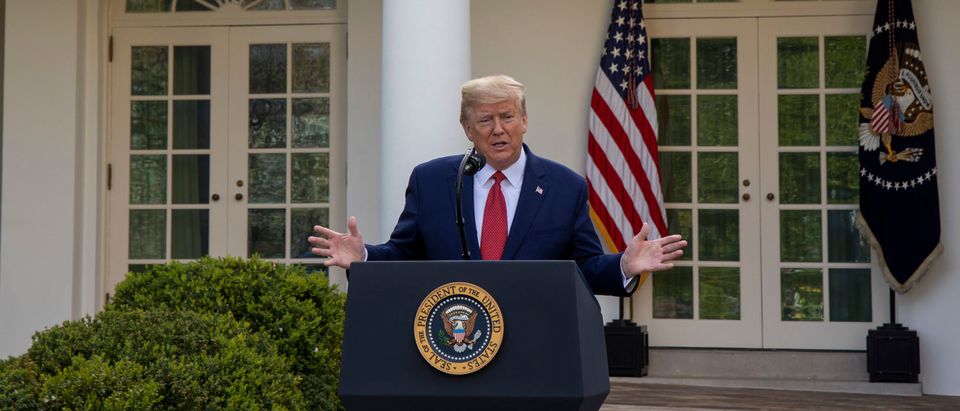The daily palate of press conferences from the White House press briefing room has become must-watch television, not only for every American concerned about COVID-19 but also for every student of strategic communications, crisis management and theatre.
These national powwows are headlined by a president moving to the top of his game, backed by a supporting cast on top of theirs and witnessed by the socially-distanced media in attendance who find themselves playing a role that swerves between being a hero or a goat.
Even detractors of the president, those who in the past have found little to complement and much to scorn, must agree that these nightly nougats of “live news “ now dominate the national conversation, the 2020 campaign and the nation’s state of mind.
Welcome to America’s new “center stage,” a real-time reality play in which how updates are delivered is often more important than the information itself. This is one arena where the simplest facial expression, gesture or involuntary tic can be read (or misread) as some revelation, affirmation or even a confession of guilt.
When Dr. Tony Fauci – America’s consensus COVID-19 VIP – stood behind the president and reflexively covered his face to conceal a lozenge that had stuck in his throat, conspiracy theorists on the right – and Trump haters on the left — went wild about what it meant. Some have gone as far as to question his counsel, and second-guess his loyalty, to the commander-in-chief.
As ludicrous as that is – Fauci has been a pandemic rock star — it does speak to a larger truth. Hungry for reassurance that the COVID-19 pandemic will eventually diminish as a threat to all mankind, we are hanging on every word, every look and every performance to affirm what we hope and dispel what we fear.
Marshall McLuhan, the communications guru who studied the impact of mass media on behavior and psyche, was fond of saying “the medium is the message” (in his world that meant television; in ours, that includes everything from cyber and digital to the visual and mobile).
Yet what McLuhan downplayed were the messengers themselves, and their ability (or inability) to project wisdom, relevance and feeling to an audience looking for all three.
This helps explain why the president’s poll numbers are soaring skyward (the most recent Gallup and Monmouth surveys show the highest approval numbers of his presidency), as he moved from the disquieting drone of an Oval Office address to the comforting chorus of press conferences where he is increasingly emotive, energized and engaged. In a word, himself.
The president is of the moment because he lives in the moment. He refuses to look back as ardently as he rushes to move forward. Will Rogers, America’s folksy provocateur of common sense from the last century, put it best for all of us who live in the current one: “never let yesterday use up too much of today”.
As for the rest of the President’s “A-Team” — led by VP Pence and boosted by Fauci, Birx, Hahn, Navarro, Mnuchin, et alia – they are delivering commanding performances as well, day after day, night after night, providing an infusion of expertise and positivity at a time when we’re all still struggling to grasp what’s happening and why.
On another very public stage thirty years ago, President Jimmy Carter struggled to console an American public filled with angst and anger over their countrymen being held hostage by Ayatollah-backing terrorists in Iran. Carter’s four-year presidency was effectively eclipsed by 400-plus days where the nation was embarrassed, emasculated and hung in effigy.
Nearly twenty years ago, New York was devastated by an attack that changed us forever, one that turned our 9-1-1 code for distress into a 9-11 rallying cry. President George Bush (sparked by the talent and presence of then-Mayor Rudy Giuliani) not only brought our country together but held us together.
Today, staring into the eye of a pandemic, the nation is uniting once again to fight back. With health care workers on the frontline, first responders manning every line and companies quickly lining up to provide resources to both, this is the moment to bet on America.
And to keep watching the daily production from the White House, where the audience ratings have rarely been higher, or the lead characters been more real.
Adam Goodman is a national Republican media strategist and columnist. He is a partner at Ballard Partners in Washington D.C. He is also the first Edward R. Murrow Senior Fellow at Tufts University’s Fletcher School. Follow him on Twitter @adamgoodman3


